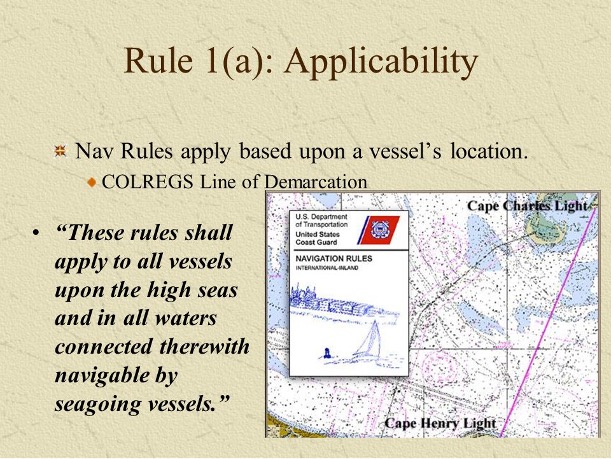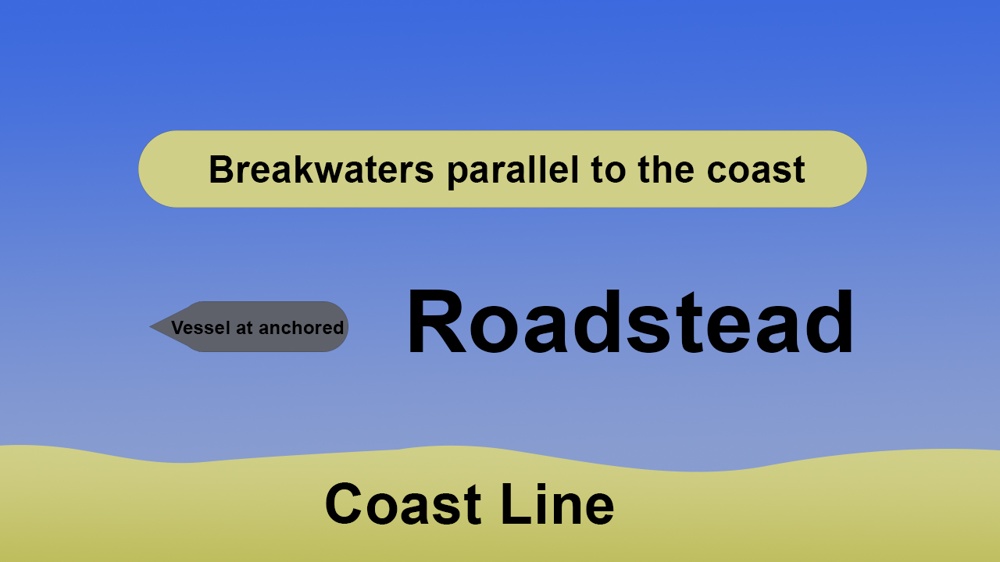The COLREGs are the International Regulations for Preventing Collisions at Sea. They are a set of information, advice, guides, and mandatory rules that all ships must follow in order to avoid collisions.
Much like how all other regulations are structured, the Colregs set out by first defining and demarcating the responsibilities of the major contracting parties–Ships, Flag States, and their agencies, as well as where the regulations are to apply in the following manner:
“These Rules shall apply to all vessels upon the high seas and in all waters connected therewith navigable by seagoing vessels”.
Rule 1 is set out in five (5) paragraphs, with each paragraph setting out the responsibilities of each of the contracting parties involved in the prevention of collisions at sea. This write-up will explain the responsibilities of the major parties to collision prevention and the areas where the regulations apply. It will also explain the provisions incorporated for cases where alternate arrangements by flag states are required.

Who and When Do You Have to Follow the Rules?
Paragraph a of Rule 1 sets the tone for the overarching objective of the COLREGs–collision prevention, by concisely indicating that all vessels, regardless of size, are required to follow the rules outlined in the Colregs. This includes small yachts, fishing vessels, and barges.
The rules are applicable in all waters connected to the high seas, including major rivers with port cities and waters frequented by ocean-going vessels. The term “high seas” refers to open waters, coastal waters, or waters located far from land. All bays and canals connected to the sea are also included, with the exception of those specifically exempted later in paragraph “b” of this rule.

Responsibilities of the Flag States and Their Agencies.
Paragraph b of Rule 1 provides that in the event that a harbor, port authority, or country decides to adopt any particular rules for its port approaches or rivers, or anchorages, the COLREGS shall not generate confusion by taking an opposing perspective to the rules.
In the event that specific regulations are enacted, they must be kept confined to the areas specified in the Rules, which are “roadsteads, harbors, rivers, lakes, or inland waterways.” The body that exercises jurisdiction over the area in question would be considered the proper authority.
However, the standards that a country or port establishes must not be too dissimilar to the COLREGS. This is to ensure that there is as little misunderstanding and error as possible, which in turn will reduce the likelihood of accidents occurring.
Such specialized regulations, for example, are in place and are applied in the inland waters of Japan–the inland sea of Japan, and the extensive network of rivers and canals in the United States. The inland rules of the US begin to apply to all traffic within 3 miles of the US coast. Mariners can find local regulations, for example, in Sailing directions Pilot books and Guide to Port Entry.
Responsibility with Respect to Equipment for Specialized Ships.
Paragraph c of Rule 1 concerns itself with additional stations, signal lights, shapes, or whistle signals for ships of war or vessels proceeding under convoy, as well as additional stations, signal lights, or shapes for fishing vessels engaged in fishing as a fleet.
It stipulates that if a country wishes to make special rules for specialized ships with respect to showing additional stations or signals or lights for warships or for fishing fleets, then these special rules should be such that they would not be confusing with that prescribed for a normal seagoing vessel; that is, they should not be similar to another signal in the COLREGS that has a different meaning. This means that they should not be similar to another signal in the COLREGS.
High-Density Area Traffic Control.
Since the density of traffic is a significant factor in collision prevention, the Rule at its beginning makes provisions for controlling traffic at places where it is required. Paragraph d of the Rules provides for traffic separation schemes to be adopted or imposed by the IMO, at any time and in any location
This is to make it easier for ships to navigate in an area with significant traffic by physically separating opposing traffic streams. Such Traffic Separation Schemes will be implemented with the intention of making these COLREGS more effective in their intended function-collision prevention.
This Rule grants authority to the IMO to implement traffic separation schemes, in accordance with the provisions of Regulation 10, in these Rules. In exceptional circumstances, the government may choose to implement a new scheme or an amendment to an adopted scheme before receiving IMO approval. Amendments and information about new schemes are promulgated through “IMO publication known as Ship Routing”
Alternate Construction and Equipment of Specialized Vessels
Paragraph e makes provisions for Governments to allow special ships to carry their lights or shapes in a different place if such ships due to the nature of the equipment fitted do not have places as specified in the annexes to fit the lights or shapes as required by the COLREGS.
Under such circumstances, a government may allow these special ships to carry their lights or shapes in a different place. However, the government must ensure that these are the closest. deviations possible from the COLREGS possible. In other words, they are almost identical to the ones that are installed on conventional ships. An aircraft is a typical example.
The primary distinction between paragraphs ‘c’ and ‘e’. is that requirements developed in accordance with paragraph ‘c’ must have characteristics that “cannot be mistaken for any light, shape or signal authorized elsewhere under these Rules,” They are also “additional” to the requirements stated in these Rules.
On the other hand, requirements developed to meet paragraph ‘e’ are in lieu of the requirements stated in these Rules or are alternate substitutes with the closest possible compliance as the government considers them to be.
Conclusion.
Rule 1 could perhaps be regarded as the most important aspect of the whole Colregs because of the emphasis it lays on the responsibility of the various parties responsible for collision prevention and also its detailed explanation and demarcation of where the rules apply.
We have prepared another article as part of a series about COLREG rules: Safe Speed of A Ship, COLREGs Rule 6 Explained!
- Sustainable and Luxurious: Discovering Split’s Yachting Paradise – April 26, 2024
- MarineTraffic vs VesselFinder: Which Is Better Vessel Tracking Service? – February 14, 2024
- Port Costs: A Comprehensive Guide to Port Dues and Fees for Cargo Ships – February 12, 2024





Leave a Reply